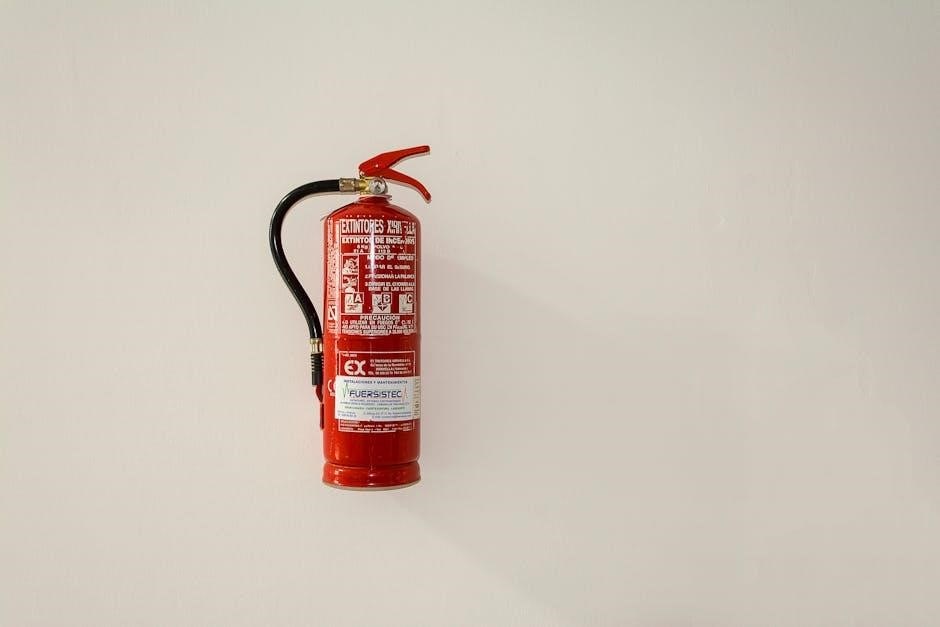The AGA Oil Control Valve is a precision device regulating oil flow to the burner, ensuring efficient operation of oil-fired appliances. This guide provides comprehensive instructions for installation, operation, and maintenance to optimize performance and safety.
The AGA Oil Control Valve is a critical component in oil-fired heating systems, designed to regulate the flow of oil to the burner. It ensures a consistent and precise fuel supply, typically within a range of 4 to 8 cubic centimeters per minute, optimizing combustion efficiency. This valve is specifically engineered for compatibility with AGA Don cookers and other models, including the OC, OCB, and OE series. Its primary function is to meter oil flow accurately, preventing excess fuel consumption while maintaining reliable operation. The valve is mounted near the cooker and connects directly to the burner, making it an essential part of the heating system’s functionality and safety.
1.2 Importance of Proper Valve Installation and Maintenance
Proper installation and maintenance of the AGA Oil Control Valve are vital for ensuring efficient and safe operation of oil-fired appliances. Incorrect installation can lead to inconsistent oil flow, reducing system efficiency and potentially causing safety hazards. Regular servicing, including cleaning and replacing components like the oil filter, prevents clogging and ensures optimal performance. Neglecting maintenance may result in system malfunctions, increased fuel consumption, and even premature wear of the valve. Adhering to recommended maintenance schedules and installation guidelines ensures reliable operation, minimizes risks, and extends the lifespan of the valve and associated heating system components.
Installation of the AGA Oil Control Valve
The AGA Oil Control Valve must be installed in a convenient position near the cooker, ensuring correct alignment and connection to the burner for proper functionality.
2.1 Mounting Positions for the Oil Control Valve
The AGA Oil Control Valve can be mounted on either the left or right side of the cooker or in a convenient position adjacent to the appliance. It must be installed in the same room as the cooker to ensure proper functionality. The valve should be securely fastened to a stable surface, avoiding any obstructions that could interfere with its operation. The mounting position must allow easy access for maintenance and servicing. Proper alignment and installation by an authorized AGA Distributor are crucial to ensure the valve operates efficiently and safely. Correct mounting prevents issues with oil flow regulation and system performance.
2.2 Connecting the Oil Control Valve to the Burner
Connect the oil control valve to the burner by ensuring all valves on the oil feed pipe are fully open. Verify that oil is present in the valve before proceeding. Attach the oil feed pipe securely to the burner inlet, ensuring proper alignment and tight connections to prevent leaks. Once connected, switch on the electric supply to the oil control box and depress the reset lever on the valve to initialize the system. Allow the oil to flow freely and check for any signs of leakage or malfunction. Proper connection ensures consistent oil flow and optimal burner performance. Always follow safety guidelines during this process. If issues arise, consult an authorized AGA professional for assistance.
Operating the AGA Oil Control Valve
Ensure all oil valves are open and oil is present in the valve. Depress the reset lever to initialize the system and verify proper operation.
3.1 Initial Setup and Configuration
1.1 Overview of the AGA Oil Control Valve
The AGA Oil Control Valve is a precision device designed to regulate oil flow in heating systems, ensuring efficient and reliable operation of oil-fired appliances. Specifically crafted for AGA Don cookers, this valve maintains a consistent oil flow rate between 4 to 8 cubic centimeters per minute; It is compatible with models such as OC, OCB, and OE, as well as various conversions like DON and Oilwarm. The valve plays a crucial role in controlling oil consumption and promoting efficient combustion. Its design allows for easy integration into existing systems, making it a vital component for maintaining optimal performance in oil-fired heating applications.
3.2 Adjusting the Oil Flow Rate
Adjusting the oil flow rate on the AGA Oil Control Valve ensures optimal performance and efficiency. Locate the regulating knob on the valve and turn it clockwise to decrease the flow or counterclockwise to increase it. Always check the oil flow gauge to monitor the rate. For precise adjustments, refer to the diagram on the valve, which indicates the direction to turn the adjustment screws. Ensure the flow rate aligns with the recommended range for your specific appliance. Over-adjustment can lead to inefficiency, so make small changes and test the system thoroughly after each adjustment. This process ensures consistent fuel delivery and reliable operation of your oil-fired appliance.
3.3 Resetting the Oil Control Valve
To reset the AGA Oil Control Valve, ensure all oil valves are open and oil is present in the valve. Locate the reset lever on the front of the valve. Depress the lever firmly and hold it for a few seconds until you hear a distinct “click,” indicating the valve has reset. Release the lever and observe the burner to ensure it ignites properly. If the burner does not ignite, repeat the process and check for any blockages or issues in the oil supply. Resetting the valve restores normal operation after a fault, ensuring safe and efficient performance of your oil-fired appliance. Always follow this procedure carefully to avoid system malfunctions.

Maintenance and Servicing
Regular servicing ensures optimal performance and longevity. Check and replace the oil filter, clean components, and inspect connections; Schedule professional servicing at recommended intervals to maintain efficiency and safety.
4.1 Regular Servicing Requirements
Regular servicing is crucial for maintaining the AGA Oil Control Valve’s efficiency and safety. Ensure all oil valves are open and oil flows freely. Check the oil filter and replace it as needed to prevent contamination. Inspect the reset lever and adjustment screws for proper function. Clean any debris or buildup around the valve to avoid blockages. Schedule professional servicing annually or as recommended by the manufacturer to address complex issues and ensure compliance with safety standards. Proper maintenance prevents premature wear and ensures reliable operation of your oil-fired appliance.
4.2 Checking and Replacing the Oil Filter
Regularly checking and replacing the oil filter is essential for maintaining the performance and longevity of the AGA Oil Control Valve. Start by turning off the oil supply and allowing the system to cool. Inspect the filter for contamination or damage, and replace it if necessary. The oil filter should be replaced every 3 to 6 months, depending on usage. To replace, disconnect the filter from the valve, ensuring no oil spills. Install a new filter securely and reset the oil control valve by depressing the reset lever. Always refer to the manufacturer’s manual for specific instructions tailored to your model.

Troubleshooting Common Issues
This section addresses common issues with the AGA Oil Control Valve, providing diagnostic steps and solutions to ensure optimal performance and minimize downtime.
5.1 Diagnosing Uneven Burner Flame
An uneven burner flame can indicate issues with the oil flow rate or valve calibration. Check if the oil control valve is properly adjusted and clean. Ensure the oil filter is not clogged, as this can restrict flow. Verify that the valve’s reset lever is functioning correctly. If the flame persists, inspect the valve’s adjustment screw and gently turn it clockwise or counterclockwise to balance the flow. Ensure all oil valves are fully open and the system is pressurized correctly. If the issue remains, consult a professional for servicing, as internal valve components may require calibration or replacement to restore even combustion.
5.2 Resetting the Oil Control Valve After a Fault

After a fault, resetting the AGA Oil Control Valve ensures proper system operation. First, ensure all oil valves are fully open and the oil supply is sufficient. Locate the reset lever on the front of the valve and depress it firmly. This action resets the valve, allowing oil to flow correctly; Once reset, check the burner flame to ensure it is even and stable. If the flame appears uneven, refer to the diagnosing guide. Regular resets may be needed if faults persist, indicating potential issues with the valve’s internal mechanism or oil flow regulation.

Safety Precautions
Ensure proper isolation of the oil supply before servicing. Install a manual isolator valve near the appliance for safe maintenance. Handle electrical components with caution, avoiding direct contact.
6.1 Ensuring Proper Isolation of Oil Supply
Proper isolation of the oil supply is critical for safe maintenance. Always install a manual isolator valve near the appliance, ensuring easy access. Turn off the main oil supply and verify the system is depressurized before servicing. This prevents accidental oil flow and potential hazards. Use approved valves and follow local regulations for installation. Regularly inspect the isolator valve for leaks or damage. If unsure, consult a qualified technician to ensure compliance with safety standards and prevent system malfunction.
6.2 Handling Electrical Components Safely
When handling electrical components of the AGA Oil Control Valve, ensure the power supply is switched off at the mains. Verify the system is de-energized using a voltage tester. Avoid touching electrical parts with wet hands or while standing on a damp surface. Use insulated tools to prevent shock. Never bypass safety features or override electrical interlocks. If a fault occurs, reset the valve only after addressing the issue. Always refer to the user manual for specific instructions and consider consulting a qualified electrician for complex tasks to maintain safety and system integrity.
The AGA Oil Control Valve instructions provide a comprehensive guide for installing, operating, and maintaining the device. By following these steps, users can ensure optimal performance, safety, and longevity of their oil-fired appliances. Proper installation, regular servicing, and adherence to safety precautions are crucial for efficient operation. Troubleshooting common issues and understanding electrical component handling further enhance system reliability. Always refer to the manual for specific guidance and consult professionals when needed. This guide equips users with the knowledge to manage their AGA Oil Control Valve effectively, ensuring consistent heating and minimizing potential hazards.


